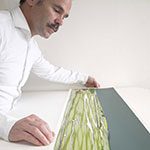Rottingdean the Sea and Beacon Mill
£192.00
Description
Rottingdean the Sea and Beacon Mill
Print description
Late summer, past the high grasses at Beacon Hill, the charming village of Rottingdean is revealed facing the sea and Beacon Wind Mill.
Print details
I create this print from my original ink drawings and apply colour digitally. I print them on fine art paper using archival inks. I issue formats A0, A1, A2, A3, and A4 as limited editions of 100, and I individually sign and number each print.
Rottingdean
Rottingdean, a picturesque village in Brighton and Hove on the south coast of England, shares borders with Saltdean, Ovingdean, and Woodingdean. Its historic center is a frequent feature on postcards.
The name Rottingdean likely refers to the valley of the people associated with Rōta, a Saxon leader who invaded the region around 450–500 AD. The first mention appears in the Domesday Book (1086) as Rotingeden. Variations include Ruttingedene (1272), Rottyngden (1315), and Rottendeane (1673).
Rottingdean Windmill: A Historic Gem
Beacon Mill, a charming grade II listed smock mill in Rottingdean, Sussex, England, boasts a rich history. Built in 1802, it stands proudly within the Beacon Hill Local Nature Reserve. Despite facing challenges over the years, including a mysterious ‘ancient warrior’ skeleton discovery during foundation digging, Beacon Mill has been lovingly restored multiple times. Originally working until 1881, it faced near-demolition in 1890. Thanks to the Marquis of Abergavenny, it saw repairs in 1905. Restoration efforts in 1935, 1969, and 1974 have ensured this historic mill continues to shine as a seamark, telling tales of its resilient past.”
Beacon Hill
Beacon Hill, an 18.6-hectare Local Nature Reserve on the outskirts of Brighton in East Sussex. Managed by Brighton and Hove Council, this chalk grassland site offers breathtaking sea views and diverse flora, including round-headed rampion, vetches, wild thyme, and orchids. Skylarks add to the vibrant birdlife.
For over six thousand years, Beacon Hill has been grazed chalk grassland, resembling the vast steppes from Hungary to Mongolia. Human intervention, particularly sheep farming, has maintained grazing, creating biodiversity akin to a miniature rainforest.
Designated a Local Nature Reserve in 2004, Beacon Hill joins other chalk grassland reserves like Benfield Hill, Bevendean Down, Ladies Mile, and Whitehawk Hill around Brighton and Hove. Nearby, Castle Hill boasts the status of a National Nature Reserve.
The Grange Gallery. Rottingdean Heritage
In July 2022 a show that marked the 150th anniversary of William Nicholson’s birth opened at the Grange, Rottingdean Heritage Art Gallery. ‘A Was an Artist’ centred on Nicholson’s life in Rottingdean in the first quarter of the last century. The show was fantastic with many paintings and prints by the artists. Later that year I had a lovely solo show at this space, and what’s more I am coming back with another solo show this autumn 2024 from 13 – 24 November
The Grange, originally a vicarage extended by Thomas Hooker in the early 19th century as a school, underwent a transformation when purchased by artist Sir William Nicholson before WW1. In the 1920s, Lutyens restored it for Sir George Lewis, with Gertrude Jeckyll influencing the garden design. The property, once occupied by developer Charles Neville, now serves as an Art Gallery and Museum managed by Rottingdean Heritage volunteers. It also houses the local library and Tourist Information Hub, overseen by Brighton and Hove Council
